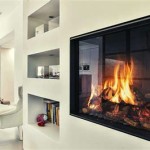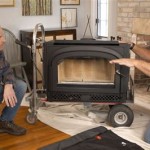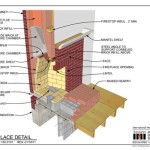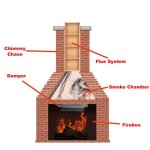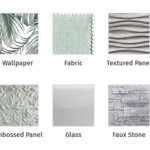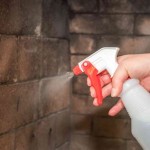Fire Glass Fireplaces: An Elegant and Efficient Heating Solution
Fire glass fireplaces have emerged as a popular and stylish alternative to traditional wood-burning or gas log fireplaces. Offering a modern aesthetic, enhanced safety features, and improved efficiency, fire glass provides a sophisticated ambiance to both indoor and outdoor spaces. This article will delve into the characteristics, benefits, installation considerations, and maintenance aspects of fire glass fireplaces, providing a comprehensive understanding of this innovative heating solution.
Fire glass is typically made from tempered glass that has been heat-treated and tumbled to create smooth, multifaceted pieces. This process ensures the glass can withstand the high temperatures of a fireplace without melting, discoloring, or releasing harmful fumes. Fire glass is available in a variety of colors, shapes, and sizes, allowing homeowners to customize the look of their fireplace to suit their personal preferences and décor. The reflective qualities of the glass amplify the flames, creating a visually captivating display.
Compared to traditional wood-burning fireplaces, fire glass offers a cleaner and more environmentally friendly burning experience. It does not produce ash, soot, or smoke, eliminating the need for constant cleaning and reducing air pollution. Furthermore, fire glass fireplaces can be easily adapted to use either natural gas or propane, making them a versatile option for various fuel sources. The efficiency of heat distribution also sets fire glass apart, allowing for more effective warming of the surrounding area.
Key Benefits of Fire Glass Fireplaces
Fire glass fireplaces offer numerous advantages over conventional fireplace options. These benefits contribute to their growing popularity among homeowners seeking a blend of aesthetics, functionality, and environmental responsibility.
Aesthetic Appeal: The most immediately noticeable benefit of fire glass is its visual impact. The reflective surfaces of the glass pieces capture and amplify the light from the flames, creating a mesmerizing display. The availability of different colors, ranging from vibrant blues and greens to subtle ambers and clear options, allows for customization to match any interior or exterior design scheme. The modern and sophisticated look of fire glass elevates the overall aesthetic of a room or outdoor space, transforming it into a stylish focal point.
Enhanced Safety: Fire glass fireplaces offer a safer alternative to wood-burning fireplaces. As fire glass does not produce embers or sparks, the risk of accidental fires is significantly reduced. This makes them a particularly suitable option for homes with children or pets. Furthermore, the controlled nature of gas or propane-fueled fire glass fireplaces minimizes the risk of uncontrolled flames or flare-ups.
Improved Efficiency: Fire glass efficiently radiates heat, providing a more consistent and even warmth compared to traditional fireplaces. The glass heats up quickly and retains heat for a longer period, maximizing the thermal output and minimizing fuel consumption. This increased efficiency can lead to energy savings over time. Additionally, the lack of smoke and ash means that less heat is lost up the chimney, further contributing to the overall efficiency of the heating process.
Installation Considerations for Fire Glass Fireplaces
Proper installation is crucial for the safe and efficient operation of a fire glass fireplace. Whether retrofitting an existing fireplace or installing a new one, careful planning and adherence to safety guidelines are essential.
Fireplace Compatibility: Before installing fire glass, it is important to ensure that the existing fireplace is compatible with this type of media. Fire glass is generally compatible with both natural gas and propane fireplaces. However, the burner system must be designed to accommodate fire glass. A standard gas log burner may not be sufficient to distribute the gas evenly through the glass, resulting in uneven flames or inefficient heating. A specialized burner pan designed for fire glass is recommended to ensure optimal performance.
Venting Requirements: Natural gas and propane fireplaces have different venting requirements. Natural gas fireplaces typically require a vent that runs directly to the outside, while ventless propane fireplaces are also available. However, ventless propane fireplaces are subject to local codes and regulations, and it is crucial to ensure that they are permitted in the specific area. Proper ventilation is essential for safe operation and to prevent the buildup of carbon monoxide.
Installation Procedure: The installation process typically involves removing any existing gas logs or other media from the fireplace. The burner pan is then installed and connected to the gas line. Fire glass is carefully poured into the burner pan, ensuring that the burner ports are covered but not obstructed. It is important to use the correct amount of fire glass to achieve the desired aesthetic and heat output. Overfilling the burner pan can restrict airflow and reduce efficiency, while underfilling it may result in an uneven flame pattern. Professional installation is recommended to ensure that all gas connections are properly sealed and that the fireplace operates safely and efficiently.
Maintaining Fire Glass Fireplaces
Maintaining a fire glass fireplace is relatively simple compared to maintaining a wood-burning fireplace. However, regular cleaning and inspection are necessary to ensure optimal performance and safety.
Cleaning Fire Glass: Over time, fire glass can accumulate soot, dust, and other debris. To clean the fire glass, it can be removed from the fireplace and washed with mild soap and water. Avoid using harsh chemicals or abrasive cleaners, as these can damage the glass. After washing, the fire glass should be thoroughly rinsed and dried before being returned to the fireplace. Regular cleaning will help maintain the sparkle and reflectivity of the glass.
Inspecting the Burner System: It is important to regularly inspect the burner system for any signs of damage or wear. Check for gas leaks, corroded connections, or damaged burner ports. If any problems are detected, the fireplace should be serviced by a qualified technician. Regular inspection and maintenance will help ensure the safe and efficient operation of the fireplace.
Addressing Soot Buildup: Even though fire glass fireplaces produce minimal soot compared to wood-burning fireplaces, some soot buildup may still occur over time. If soot accumulation becomes excessive, it can affect the appearance and performance of the fire glass. In such cases, the fire glass should be cleaned, and the burner system should be inspected to ensure that it is operating correctly. Proper ventilation is also crucial to minimize soot buildup.
Ultimately, fire glass fireplaces offer a compelling combination of aesthetic appeal, safety, and efficiency. By understanding the key considerations for installation and maintenance, homeowners can enjoy the beauty and warmth of a fire glass fireplace for years to come. The ongoing advancements in fire glass technology continue to expand the options available, making it an increasingly attractive choice for both residential and commercial applications.

Fireplace Glass For Fire Pits And Fireplaces

S Fireplace Stove In Paramus New Jersey Kjb Fireplaces

Glass Fireplaces How This Material Can Lead To Innovations

27 Glass Fireplaces To Watch The Fire From All Angles Digsdigs

Fire Glass Fireplaces Guide Safety Measurements Quality

Fire Glass Mr Fireplace Patio Spa

Fireglass Media Flare Fireplaces

Corner Glass Fireplaces Archis

Glass Fireplace By Bloch Design

What Is The Difference Between Open And Glass Fronted Fireplaces
Related Posts

